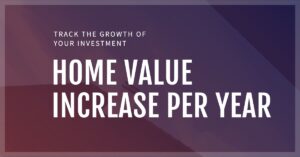The mere mention of a housing market correction sends shivers down the spines of many. Memories of the 2008 crash are still fresh, conjuring images of plummeting home values, foreclosures, and a financial crisis of epic proportions. But is a 2008 repeat on the horizon in 2024? Experts largely agree: the answer is no. Here's why the housing market today presents a different scenario, backed up by data sets and tables:
A Tale of Two Housing Markets: Supply & Demand
A critical difference between 2008 and 2024 lies in supply and demand. In 2008, an oversupply of homes flooded the market, driving prices down. The National Association of Realtors (NAR) reported a 9.4-month supply of existing homes in December 2007. Today, the situation is reversed.
Demand continues to outpace supply in many areas, influenced by factors like millennial homeownership trends and a general lack of new construction. The NAR reports a current national inventory of just 2.9 months, indicating a seller's market. This imbalance is a key factor in keeping prices stable despite economic fluctuations.
| Metric | December 2007 | February 2024 |
|---|---|---|
| Months Supply of Existing Homes | 9.4 months | 2.9 months |
Lending Standards: A Post-Crash Reformation
The subprime mortgage crisis, a key driver of the 2008 crash, was fueled by loose lending practices. In 2006, according to the Federal Reserve, a staggering 38% of all mortgages originated were subprime https://www.federalreserve.gov/. These risky loans were often issued to borrowers with weak credit or low down payments, making them more likely to default.
Today, lending standards are far stricter. Data from the Mortgage Bankers Association (MBA) shows that in 2023, the average credit score for a conventional mortgage application was 780, significantly higher than pre-crisis levels. This stricter vetting process ensures borrowers are more qualified to handle their mortgages, reducing the risk of defaults and foreclosures that plagued the 2008 market.
| Metric | 2006 | 2023 |
|---|---|---|
| Share of Subprime Mortgages | 38% | Negligible |
| Average Credit Score for Conventional Mortgages | Not Available | 780 |
Beyond Regulations: The Role of Technology
The financial crisis of 2008 spurred regulatory reforms aimed at preventing similar meltdowns. These regulations ensure stricter lending practices and increased transparency in the housing market. Additionally, technological advancements have played a significant role in shaping the 2024 market.
The rise of online real estate platforms has empowered buyers and sellers with better access to information and market trends. This transparency allows buyers to make informed decisions and avoid bidding wars based on misinformation, unlike the speculative frenzy that contributed to the 2008 bubble.
A Different Kind of Growth: Not a Bubble
While some experts express concerns about a potential bubble due to rising prices and competitive bidding wars, the current market fundamentals differ significantly from 2008. The growth is driven by low mortgage rates and a genuine demand for housing, not by speculation or risky lending practices. Unlike the 2008 market, fueled by easy credit and unsustainable housing prices, the current demand is backed by strong economic fundamentals like low unemployment and rising wages. This creates a more sustainable foundation for long-term housing market growth.
The Road Ahead: Correction or Rebalancing?
Looking forward, experts predict a market correction with stabilizing home prices and potentially lower mortgage rates. This anticipated adjustment is a natural course correction for a maturing market, not a sign of an impending crash. Unlike 2008, where the correction was triggered by a burst speculative bubble, an adjustment in 2024 is more likely a return to a sustainable equilibrium point where supply and demand meet.
The Bottom Line: Lessons Learned
The housing market of 2024 is demonstrably different from the one that led to the 2008 crisis. Tighter regulations, a cautious lending environment, and a strong underlying demand for housing paint a more optimistic picture. While challenges may exist, such as potential interest rate hikes, the market is demonstrably on a more sustainable path, informed by the lessons learned from the past. Buyers and sellers can navigate this market with more confidence, thanks to stricter lending standards, increased transparency, and a more balanced foundation of supply and demand.
Beyond the Numbers: A Shift in Mindset
The differences between the 2024 housing market and the pre-crash market of 2008 go beyond just statistics and regulations. There's a fundamental shift in how people view homeownership. In 2008, housing was often seen as a quick path to wealth, with speculation and flipping being common practices. Today, homeownership is viewed with a longer-term perspective. People are buying homes to live in, creating a sense of stability and community.
This shift is reflected in several trends:
- Focus on affordability: While affordability concerns remain, particularly for first-time buyers, there's a greater emphasis on finding a home that fits within a sustainable budget, unlike the excessive borrowing that fueled the 2008 bubble.
- Increased caution: Buyers are more cautious and meticulous in their search. They're taking the time to understand the true cost of ownership and are less likely to be swayed by emotional bidding wars.
- Value beyond price: While location and amenities remain important, factors like walkability, green spaces, and a sense of community are increasingly valued by homebuyers. This reflects a desire for a home that enhances their overall quality of life, not just its resale value.
The Future of Housing: A More Balanced Market
Looking ahead, the housing market is likely to experience a period of adjustment. Rising interest rates could cool buyer demand, leading to a stabilization or even a slight decrease in home prices. However, a drastic crash like 2008 is highly unlikely given the strong underlying economic fundamentals and the more cautious approach to lending.
The future market is likely to be characterized by:
- Greater stability: With a more balanced supply and demand dynamic, price fluctuations are likely to be less dramatic, creating a more stable environment for both buyers and sellers.
- Focus on quality: As affordability becomes a bigger concern, the emphasis will shift towards well-built, energy-efficient homes that offer long-term value.
- Technological innovation: Technology will continue to play a major role, with advancements in virtual tours, online closing processes, and data-driven market analysis further streamlining the home buying and selling experience.
Therefore, all of the above shows that the housing market of 2024 is a product of the lessons learned from the 2008 crash. With stricter regulations, a more cautious approach by lenders and buyers, and a shift in mindset towards long-term value, the market is on a more sustainable path. While challenges may lie ahead, the future of housing appears more balanced and promising, with a focus on affordability, stability, and quality of life.
ALSO READ:
Housing Market Predictions for the Next 2 Years: Boom or Bust





